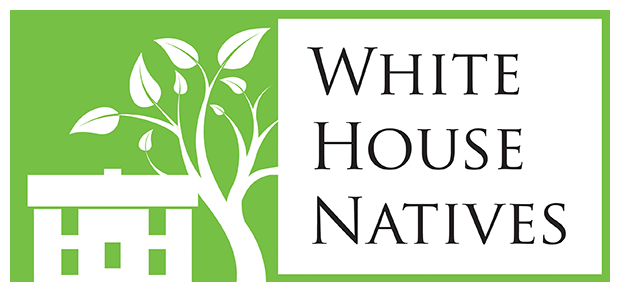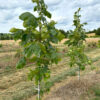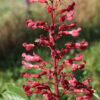Quercus lyrata, commonly called overcup oak, is a member of the white oak subfamily (Quercus sect. Quercus). Unlike many oaks, which often favor drier upland sites, overcup oak is a swamp creature; a common inhabitant of bayous and bottomlands from coastal New Jersey south and west through the Atlantic Piedmont and coastal plain to the Piney Woods of east Texas and north up the lower Mississippi Valley to the Ohio River. In its native range, Q. lyrata is a slow-growing, medium to large tree, and is one of the dominant species of the fragmented oak-water hickory ecosystem of the Atlantic coastal plain, along with water hickory (Carya aquatica), willow oak (Quercus phellos), and red maple (Acer rubrum) and formerly American elm (Ulmus americana) and green ash (Fraxinus pennsylvanica).
In habit, overcup oak is a broad, rounded tree, similar in breadth to height. The leaves emerge red and mature to a dark, glossy, leathery green with deeply rounded lobes as in white oak (Quercus alba), but with a distinctive narrower base a broader tip than Q. alba, giving a rough appearance of lyre (hence the specific epithet). The leaves turn golden-brown (occasionally russet) in the autumn. The ½ to one-inch acorns are unusually almost entirely enclosed in the acorn cup, the source of the common name overcup oak. The acorn cup is also relatively light with numerous small air pockets. This adaptation allows the acorns of Q. lyrata to be relatively buoyant, aiding in seed dispersal in the oak’s preferred water-adjacent habitat. The bark is smooth and light brown when young, maturing to a grey or grey-brown; occasionally peeling. As noted above, Q. lyrata is a slow-growing tree; often taking 25 to 30 years to reach maturity. In the wild, the tree can live 400 years or more.
[Article continues below photos.]
As a landscape tree, Quercus lyrata usually reaches a height and width of 50 to 75 feet. It thrives in dense, moist, clay soils where many landscape trees struggle and tolerates silt, acidic conditions, flooding and periodic standing water. It also adapts to drier situations once established. It is susceptible to many of the same pests as other native oaks, but usually tolerates them well. There is also increasing evidence that overcup oak is less susceptible to oak wilt than other native members of the white oak group. It is a host to several native butterflies and moths and like most oaks, is a high-value wildlife plant food for small game and birds. The acorns of Q. lyrata are amongst the lowest in tannin content of native oaks and as such were often used by Native Americans as a food source after blanching.
White House Natives currently has availability of Quercus lyrata in 2”, 2½”, and 3”caliper. It is a great oak that suits a variety of challenging situations where larger and less adaptive oaks do not work well. Give it a try!







